Although Freon has been used as an AC refrigerant for years, it is associated with Ozone depletion. If you are concerned about the environmental impact of your AC's coolant and are wondering whether Trane air conditioners use freon, we've got you covered. We researched the topic and have an answer for you.
Trane air conditioners manufactured after 2010 do not use freon. However, the Trane ACs that were manufactured before 2010 still use freon.
The EPA ban on manufacturing and importing freon can have a complex impact on the AC market, creating confusion. Read on to discover how you can tell if your AC uses freon. We will also address indicators that your AC should be recharged and how to maintain a central air conditioner.
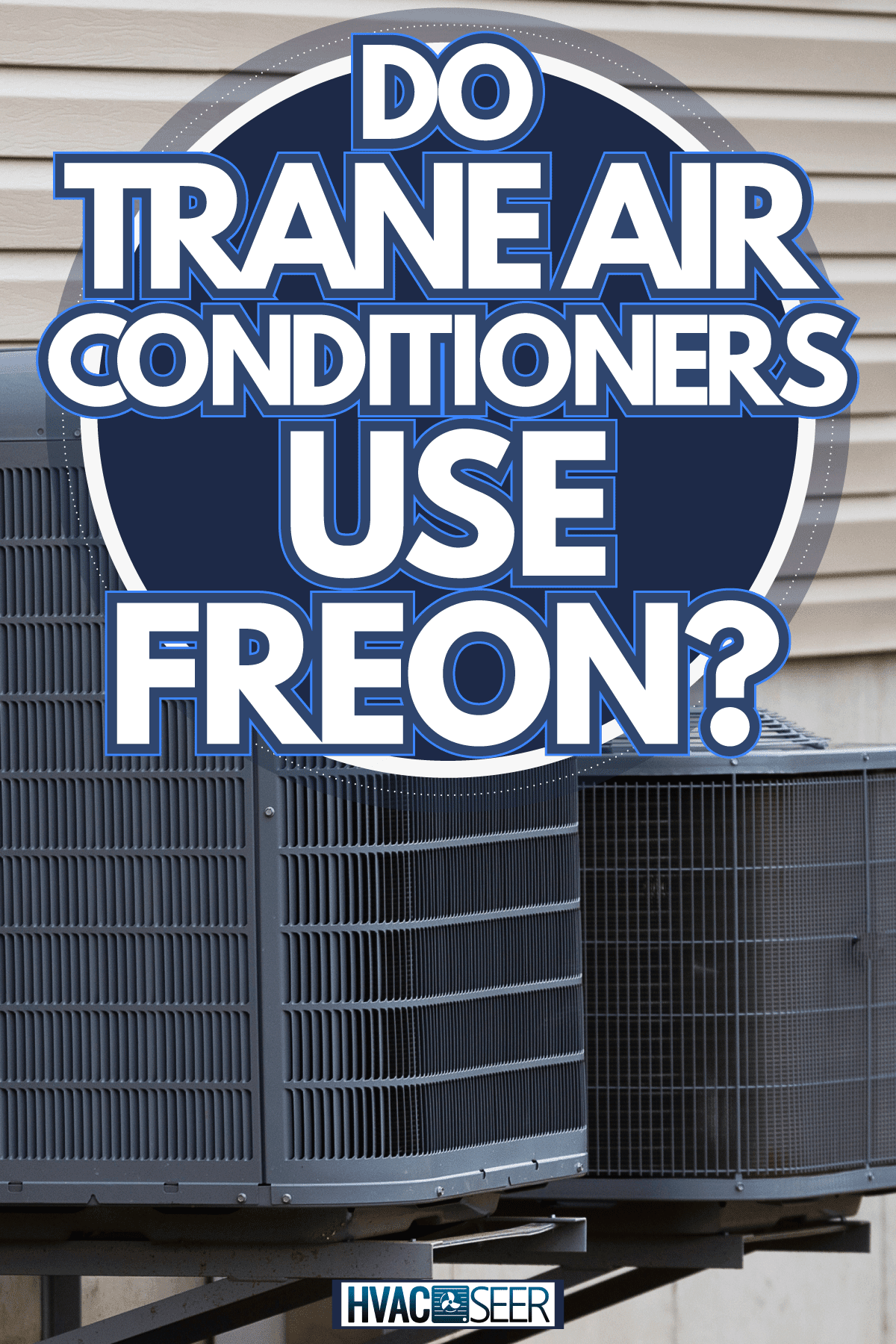
How can I tell if my air conditioner uses freon?
R22, commonly known as Freon, has been a reliable central air conditioning refrigerant for years. But since it is linked to environmental damage like thinning the ozone layer, regulations have been put in place to phase it out.
To identify the type of refrigerant your AC uses, check the label on the unit. Air conditioners that use freon will indicate that they contain R-22 or HCFC-22.
Trane air conditioners manufactured after 2010 use R-410A in place of freon. However, those manufactured before 2010 still use R-22 coolant. Check the label on your Trane AC to determine the coolant it uses.
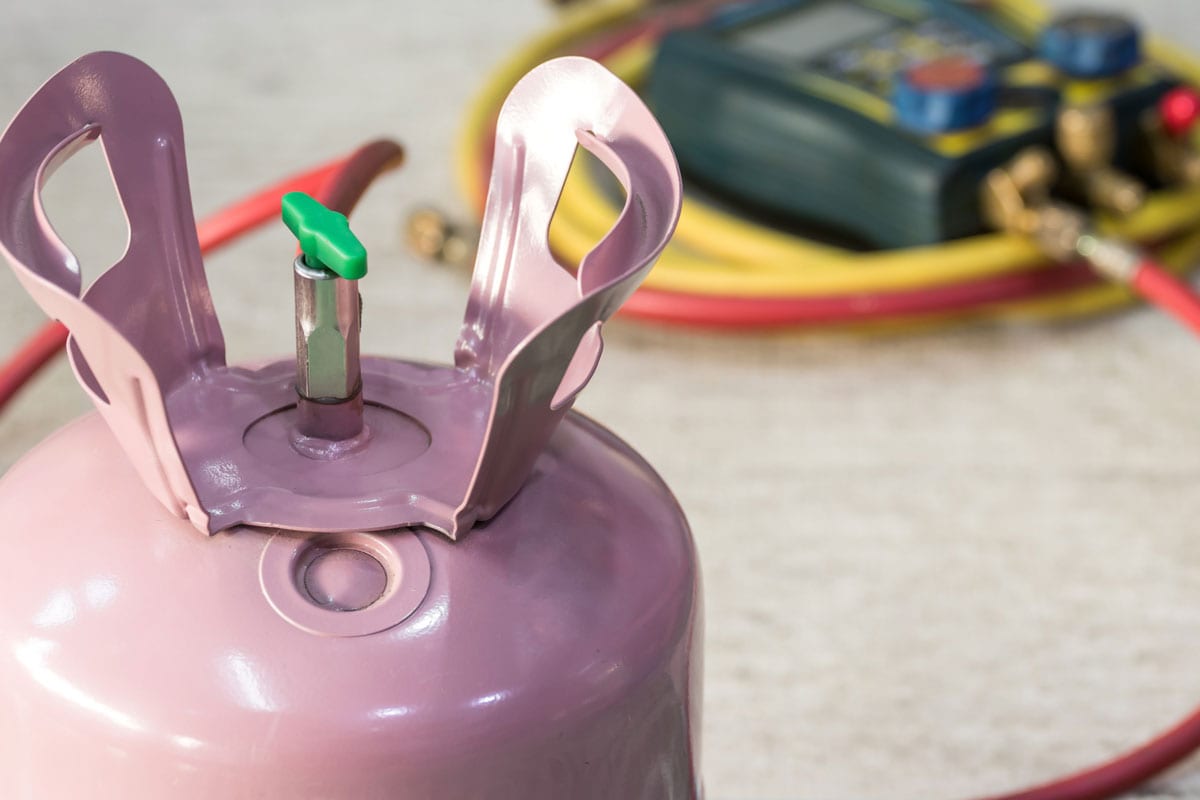
Why it is necessary to know the refrigerant your AC uses
Knowing the refrigerant your air conditioner uses is essential since there would be adverse effects on your unit's maintenance if a ban is imposed. Not only would recharging your AC system become cost-prohibitive, but it may also eventually become impossible, forcing you to eventually replace your unit.
It is also wise to use products that do not harm the environment. The depletion of the Ozone layer increases UV radiation on the earth's surface. As a result, there is an increase in immune deficiency disorders, eye cataracts, and certain types of skin cancer.
What to do if your Trane AC uses Freon
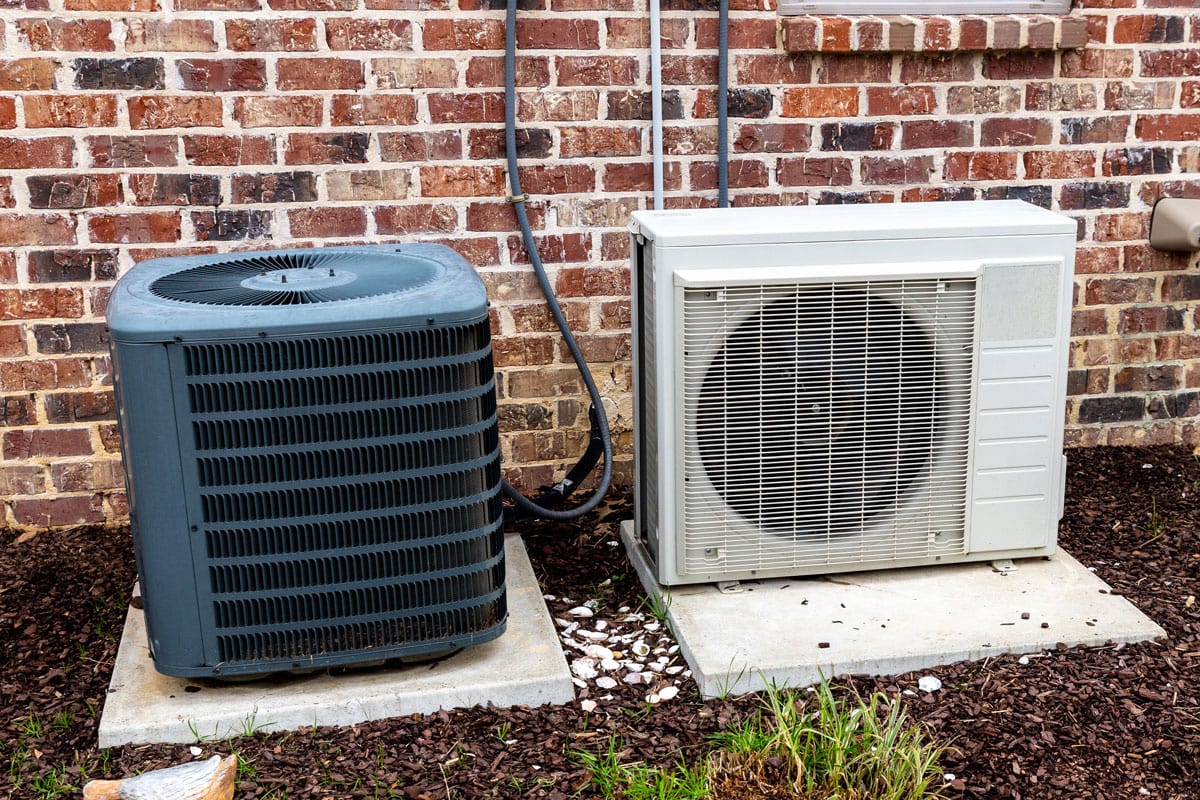
The air conditioner's refrigerant circulates in a closed loop and is expected to last the lifetime of your AC. For this reason, if your Trane air conditioner is in good working condition, you need not worry. But this does not mean that you do not need to take precautionary measures to avoid refrigerant leaks.
Hire an HVAC technician to tune up your air conditioner and check that it is free from minor leaks. If the technician notices any leaks, have them sealed as soon as possible to reduce costly AC repair costs in the future. Repairing the leaks will also prolong your unit's useful life.
Although it is possible to modify some units to use one of the recommended refrigerants, the process can be complicated and expensive. As a result, it is not advisable to replace the R-22 refrigerant with the approved R-410A. It would be better to replace the appliance with a more energy-efficient one.
How to tell when your air conditioner needs a recharge

Your air conditioner will not operate as expected if it does not have a refrigerant or has an insufficient refrigerant. The refrigerant makes air conditioning possible by absorbing and releasing heat at different stages as it flows through the AC system.
If the refrigerant is leaking, it will need to be refilled. These guidelines will help you identify whether you need to recharge your AC.
Warm air coming from vents
If you confirm that the AC is appropriately set to cool and the vents are blowing warm air, your system's refrigerant may be escaping. Your unit cannot absorb heat from the indoor air when the refrigerant is insufficient.
A low coolant can also result in your AC not cooling your home even though it runs continuously.
Ice or frost on the refrigerant lines
When the quantity of the circulating coolant is low, the evaporator coils become too cold, causing the refrigerant to change from gas to a cold liquid. The liquid coolant causes moisture along the refrigerant line to freeze.
The refrigerant flows from the evaporator coils to the compressor. But the compressor is designed to handle the coolant in a gaseous state. If the refrigerant gets to the compressor as a liquid, it poses a threat to the overall functionality of your air conditioner as it cannot release heat outside in this state.
Dripping or water pooling near your AC
The ice or frost that forms along the refrigerant line eventually melts and drips. Do not ignore puddles around your unit, as they could indicate a problem with your refrigerant.
Hissing or bubbling sound from the refrigerant line
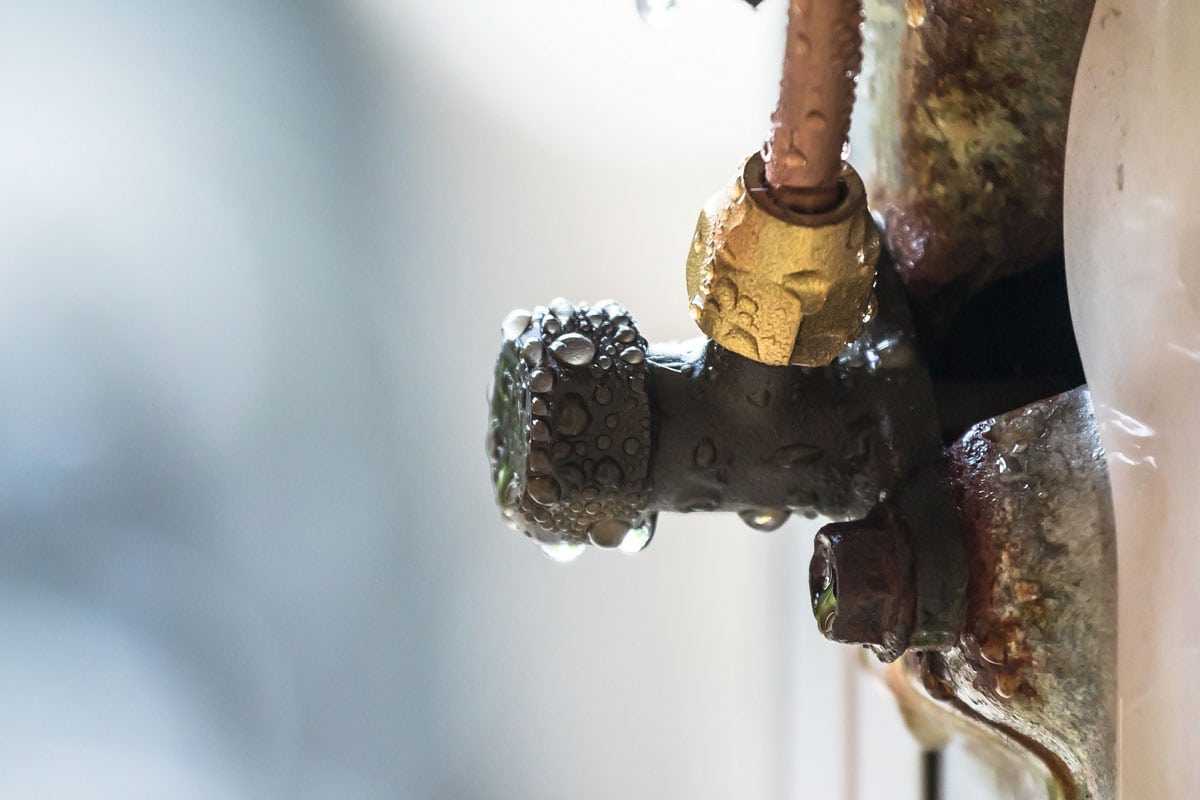
Because the refrigerant is highly pressurized, it makes a sound as it leaks.
The coolant makes bubbling sounds when it drips through bigger holes in liquid form. On the other hand, it makes a shrill hiss if it seeps through smaller holes in a gaseous state.
Higher-than-normal electricity bills
When the refrigerant is low, your air conditioner operates continuously as it tries to reach the set temperatures. As a result, you may receive higher-than-normal energy bills.
A low coolant quantity can also cause your unit to short-cycle, thus turning on and off repeatedly. Repeated cycling can increase your unit's energy consumption, leading to higher bills.
Chemical odors
Even though Puron is an aroma-free chemical, an odor has been added to help you detect leaks. If you smell an acidic or faintly-sweet smell, there could be an issue with your refrigerant.
Next step
If you suspect that your AC's refrigerant is leaking, we recommend that you call an HVAC professional. It is unwise to try and repair the leak and recharge the coolant yourself. The refrigerant is toxic and can lead to harmful side effects such as breathing problems. It can also cause death.
You can also indicate that you would like your unit's technician to check whether the appliance has enough refrigerant during annual maintenance.
How to maintain a central air conditioner
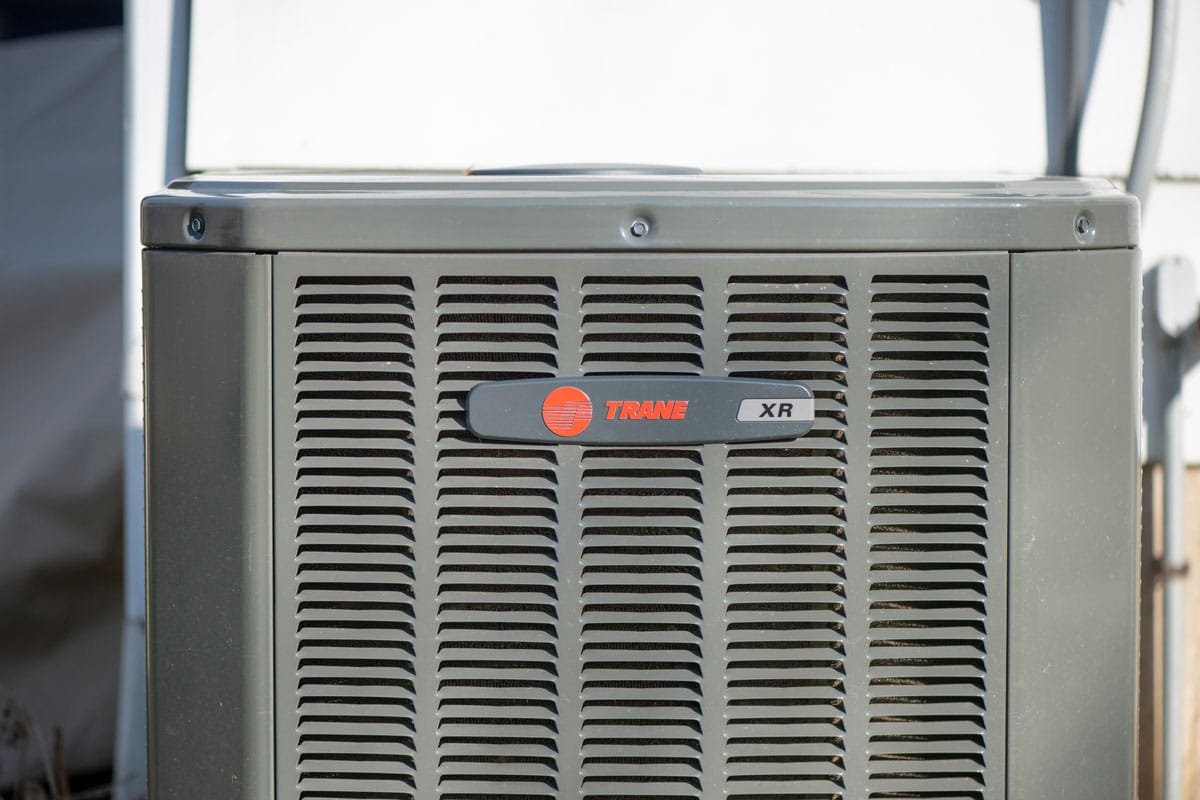
Regular maintenance keeps your unit in peak condition and allows you to detect problems within your air conditioner's system before they escalate. As a result, you enjoy smooth air conditioning and keep your home at comfortable temperatures.
Air conditioner maintenance entails tasks you can do and other tasks that are best left to the professional. The tips below indicate tasks you can do as a homeowner and those you should assign to an HVAC technician.
Maintenance by the homeowner
Change your AC filters
Your AC filters trap dust, lint, and other impurities. When the filters are dirty, the unit has to work harder to push air through the filters. Overworking increases your unit's energy consumption leading to higher bills
Dirty filters are ineffective in trapping pollutants. Your AC may release these impurities into the house's deteriorating indoor air quality.
Since dirty filters restrict airflow, you may notice some hot or cold patches in your home, reducing your comfort level.
If your AC has standard one to three-inch air filters, you can change them every 30 days. If you have pets or suffer light to moderate allergies, it would be best to change the filters more often, say every three weeks.
You will also need to consider the quality of air in your home, the size of the house, and the frequency of using your HVAC system to come up with a suitable frequency.
Read this article to discover: "Do Central Air Conditioners Have Filters? [And How To Maintain Them]."
Clear the area around your AC
It is necessary to maintain the area around your AC clean and free of debris. Do not grow plants within a two-foot radius of your unit. Also, ensure that you clear leaves and remove bird nests to keep them from getting caught in the appliance.
Level the unit
Keeping your unit level prevents the components inside your AC from becoming misaligned. Confirm that the unit is well aligned by using a level tool. If the appliance is askew, place rot-resistant shims under the base to realign it.
Maintenance by an HVAC expert
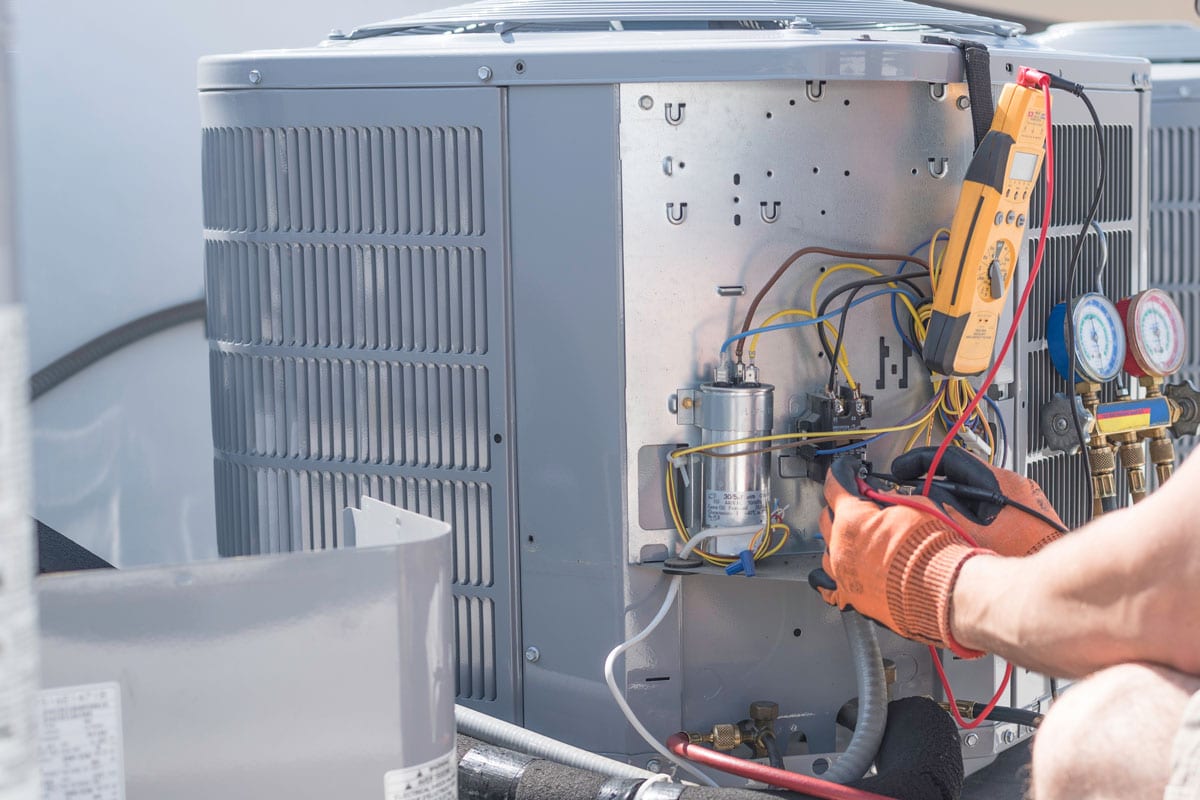
AC coil maintenance
Your air conditioner has two types of coils; evaporator coils inside the home and condenser coils outside the house. The evaporator coils absorb heat from the indoor air while the condenser coils release this heat outdoors.
Dirt hinders the efficiency of these coils, reducing their ability to absorb or release heat. The technical expert cleans the coils during annual maintenance and inspects them for damage to ensure they are working well.
Clean the blower
If dust gathers on the blower, your unit will circulate contaminated air, compromising indoor air quality. Ask the technician to inspect and clean the blower motor, fan, and belt that connects it to the rest of the AC. The technician can also lubricate the fan motor and pulleys to keep them running smoothly.
Final Remarks
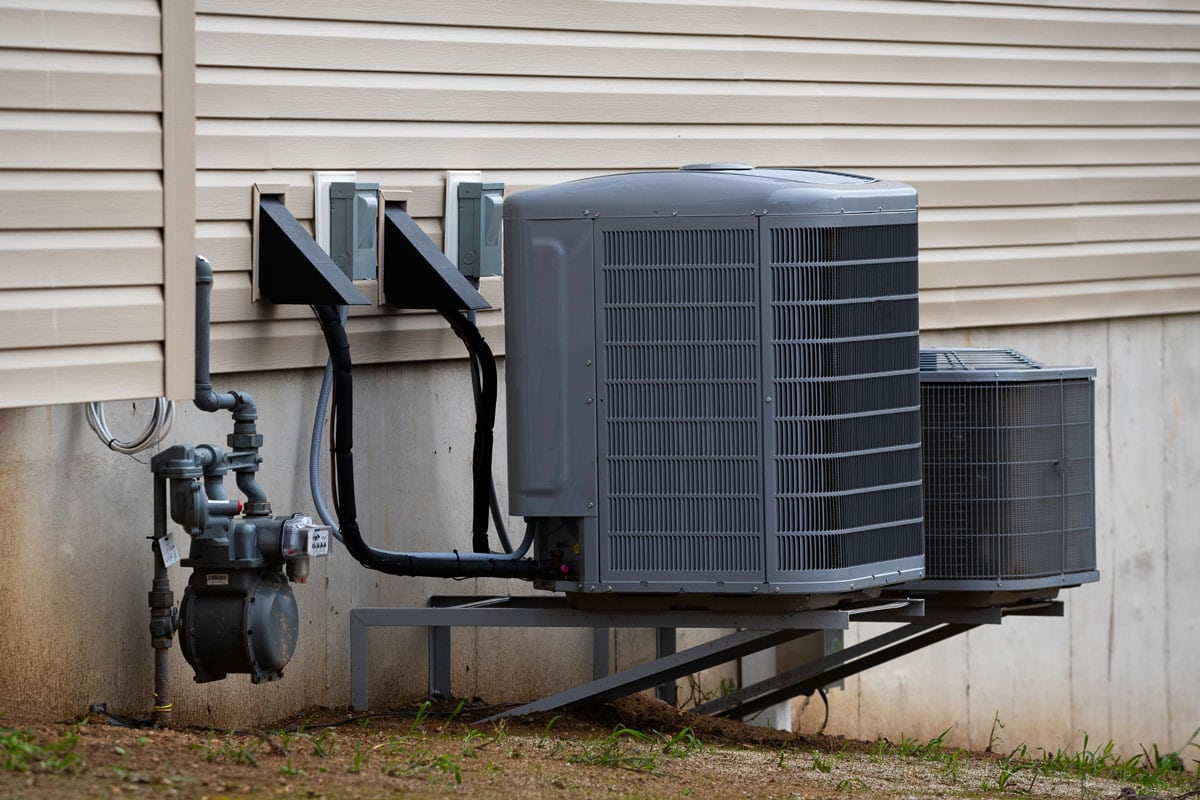
You can identify the refrigerant your Trane air conditioner uses by checking the sticker on the unit. The unit's year of manufacture can also guide you since units manufactured after 2010 do not use freon. These units use R-410A, also known as Puron, as a substitute.
Replacing freon with Puron has not deteriorated the air conditioner's cooling characteristics. Units that use Puron have been noted to offer better air quality, are more efficient, and increase comfort and reliability.
Before you go, take a look at our other articles:
What Air Conditioners Work With Coolbot? [And How To Install One]
